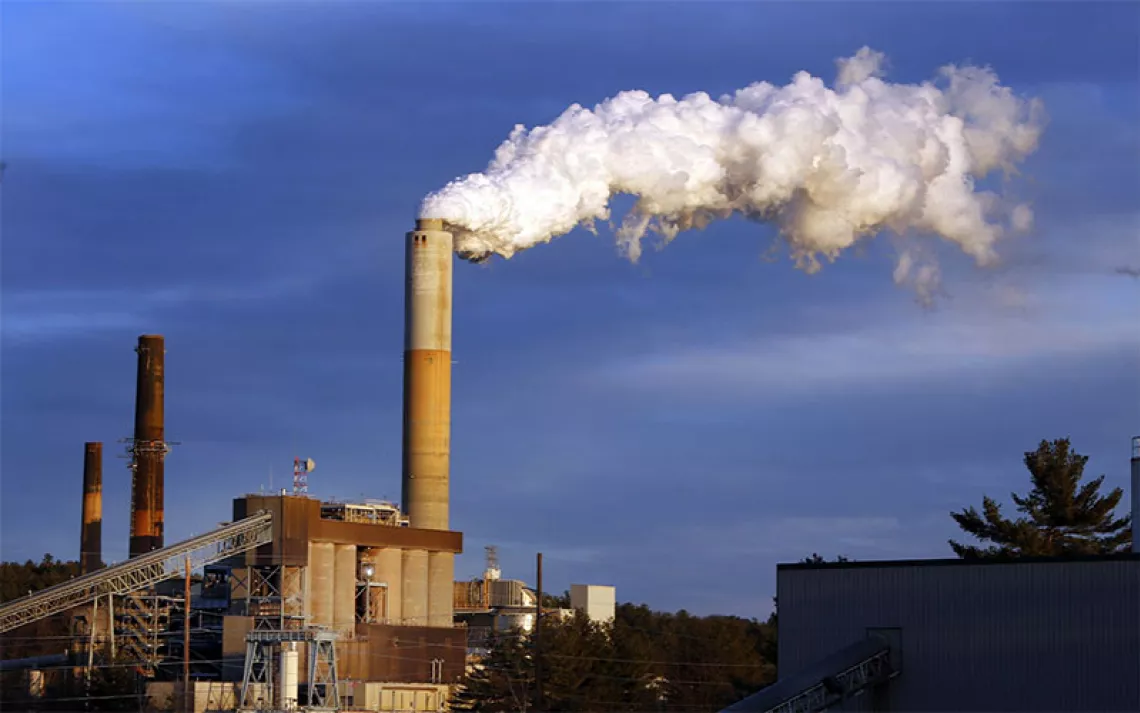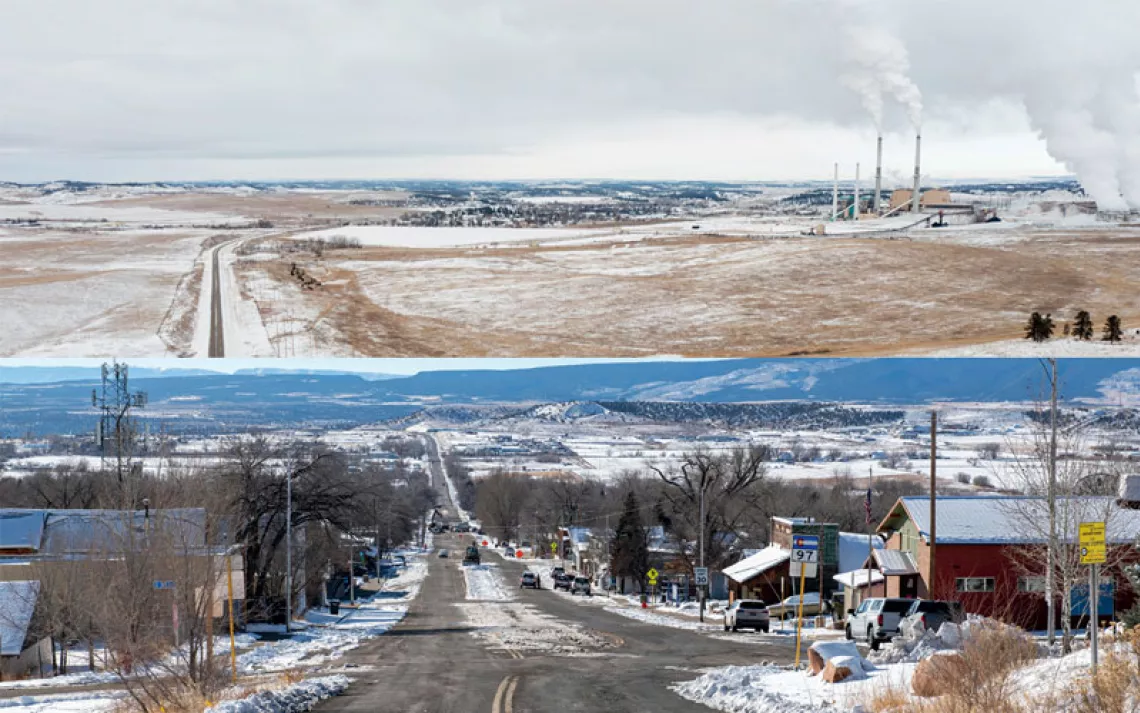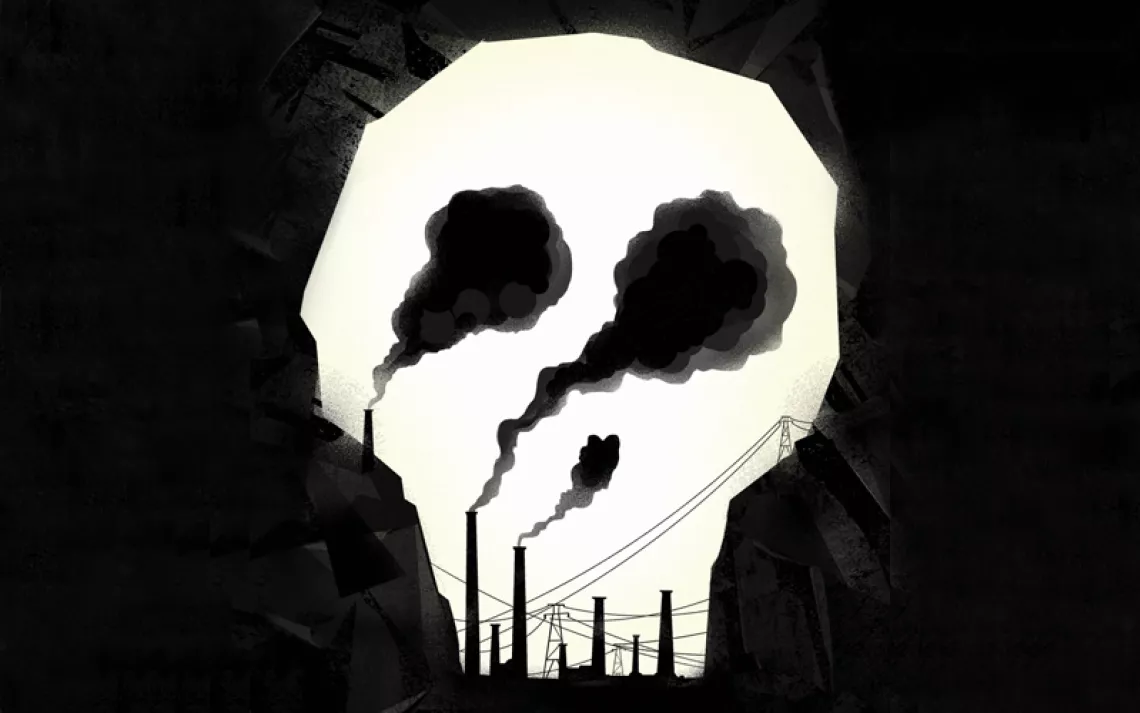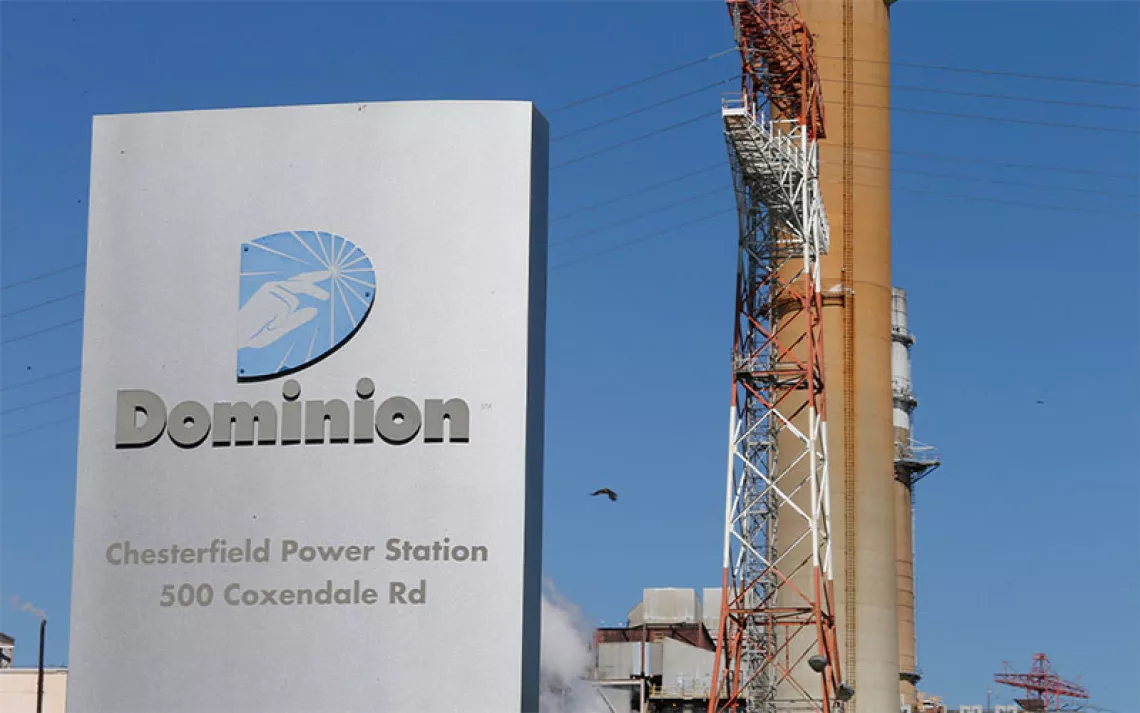This Is What Winning Looks Like
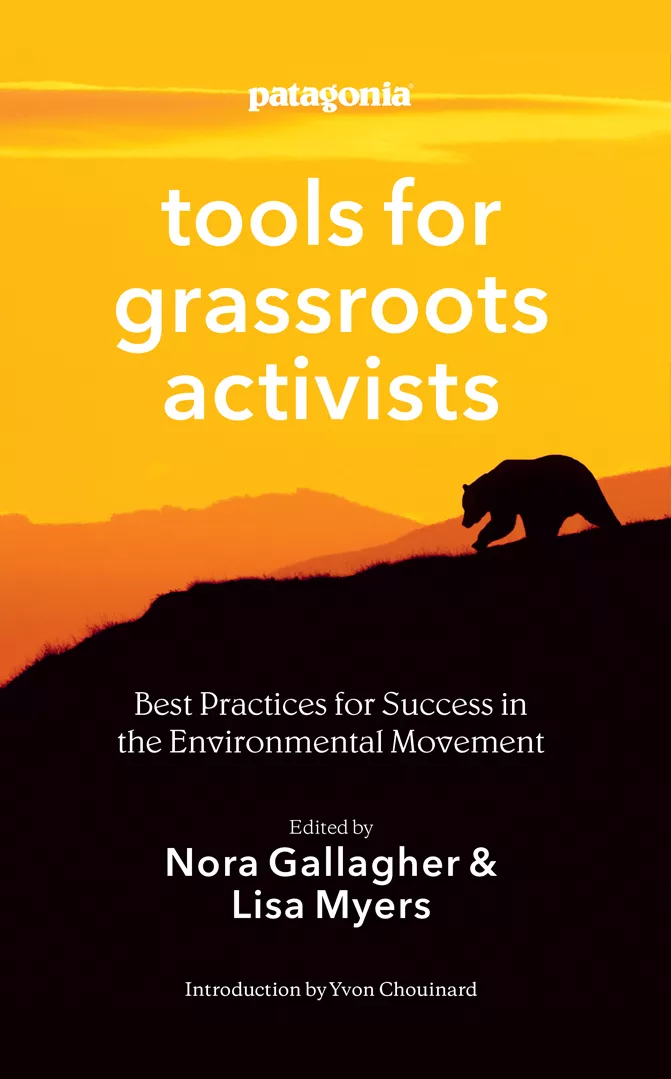
Patagonia Tools for Grassroots Activists edited by Nora Gallagher and Lisa Myers, Patagonia (2016)
Excerpted from Tools for Grassroots Activists, published by Patagonia 2016.
Indianapolis. North Omaha. Memphis. San Antonio. If you’re listing hotbeds of U.S. environmental activism, these cities might not be the first that spring to mind. But they are among dozens of communities leading a revolution in how we power the United States and the world, a movement Mother Jones called “a grassroots rebellion [that] is winning the biggest victory yet on climate change.”
This is the Beyond Coal campaign, a people-powered, open-source network of more than 100 organizations that has stopped the construction of 184 proposed coal plants, won the retirement of 190 existing coal plants—one-third of the fleet of U.S. coal plants, including those in the cities listed above—and opened the floodgates for record deployment of clean energy such as wind and solar.
As the director of the Beyond Coal campaign at the Sierra Club, I’ve been down in the trenches, and I’ve also had a bird’s-eye view of this remarkable movement. We’ve worked with dozens of partner organizations in what Politico called “the most extensive, expensive, and effective campaign in the [Sierra] Club’s 123-year history, and maybe the history of the environmental movement.”
In 2002, I was working in Appalachia and seeing proposals pop up for new coal-fired power plants. Environmental advocates around the Unites States who were faced with these proposals began connecting the dots. The total was staggering. More than 200 coal plants were on the drawing board nationwide. If they were built, it would truly be “game over” for the climate, coal would swallow up future markets for clean energy, and Americans would bear the brunt of another 50-plus years of air and water pollution.
There was only one option: Fight every single proposed power plant in the nation. In hindsight, it seems obvious. That was what the Beyond Coal movement pledged to do, despite the fact that, given our limited resources and the power of the industry at the time, many advocates and observers thought that setting such a big goal was crazy.
I had been working to stop coal companies from blowing up mountains to extract the coal beneath—a practice known as mountaintop removal—in my home region of Appalachia. In working to fight proposed coal plants in the region that would fuel demand for more mountaintop-removal coal, I met people outside Appalachia affected by coal and learned that everywhere coal was mined, burned, or disposed of, people were getting sick, beautiful places were being destroyed, and democracy was paying the price.
One of the people I met was Bruce Nilles. Bruce was working for the Sierra Club as an attorney based in Illinois, where he had found himself at ground zero in what we would later call the coal rush. He began working with tenacious volunteers (including Verena Owen, now the volunteer leader of the Beyond Coal campaign) to challenge over a dozen new coal plants proposed in Illinois. And they were winning in a true David versus Goliath fashion that inspired others to get in the fight—including me. I joined Bruce on the Sierra Club staff in 2008.
The coal industry seemed invincible at the time, and we had few resources—just a ragtag band of committed advocates and volunteers. Fast-forward to more than a decade after the campaign began in 2002, and this movement has stopped 184 proposed coal plants, with no new plants proposed for construction.
The coal rush is over.
In 2010, the campaign made a major pivot to focus on retiring the most vulnerable of the 500 existing coal plants, which were, at that time, providing half of the electricity in the United States. The fact that the nation’s aging coal plants were not going to be replaced with a new fleet left operators of the existing plants with a choice: spend money to retrofit them to meet modern health and safety standards or phase them out.
Our current goal is to win the retirement of half of America’s coal plants by 2017 and replace them with clean energy. In 2014, we were well on our way there. When we began this phase of the campaign in 2010, the nation was getting 50 percent of its electricity from coal. In 2015, the amount was less than 40 percent. Of the nation’s 500-plus coal plants, 190 have been announced for retirement, one out of every three U.S. coal plants. Not only does this mean less carbon and smog and mercury pollution, but also the industry that was the biggest obstacle to passing federal climate legislation now has less power and influence.
Mobilizing grassroots power has been at the core of our strategy, because fundamentally, these are all local campaigns, each with its own distinctive decision-makers, communities, and leverage points—and local grassroots leaders know their landscape best. The essential elements of building that grassroots power include: enlisting supporters face-to-face; creating organizing opportunities to keep people engaged in a long struggle; identifying the right targets; choosing strategic moments to flex your collective muscle; and demonstrating momentum.
I’ll give you just two examples of what that looks like on the ground for the Beyond Coal campaign: The closure of Indianapolis’ Harding Street coal plant, and the city of Los Angeles’ commitment to go coal-free.
Indianapolis was home to an urban coal plant—the Harding Street plant—that was a major air and water polluter. Indiana is a conservative, coal-producing state, and when we launched our campaign there, we knew that phasing out the plant would not be easy, despite the serious health and environmental problems it caused in the city. Early in our campaign to retire the plant, I came to town and was greeted by the headline “Beyond Coal’s Director Faces Tough Sell in Indiana.”
Over the course of two years, we not only readied our legal case targeting air and water pollution problems at the plant, but we organized and organized and organized. We reached out to dozens of community groups, held numerous visibility events, and worked with local reporters. We also met with the utility that owned the plant, Indianapolis Power and Light, to make our goals clear and begin a conversation about retiring the plant and replacing it with clean energy.
Two years later, our coalition was 50 organizations and thousands of people strong, and we were poised to pass a resolution in the Indianapolis City-County Council calling for retirement of the plant. The vote was slated for a Monday, and on the Friday before the council meeting, Indianapolis Power and Light announced that it would cease burning coal at Harding Street.
Another victory, this time on the West Coast, underscores the power of cities to lead the way to a nation powered by clean energy, regardless of gridlock in Washington, D.C. On a picture-perfect California morning in March 2013, Los Angeles mayor Antonio Villaraigosa stood with former Vice President Al Gore, billionaire businessman Tom Steyer, Sierra Club Executive Director Michael Brune, and cheering community leaders and supporters to make a huge announcement: The city of Los Angeles was going coal-free.
After a three-year campaign that engaged 15,000 people, the city was ending its contracts with two coal-fired power plants that provided 40 percent of the electricity to Los Angeles and replacing much of that coal power with solar power and reduced demand via energy efficiency.
In announcing the news the day before, Mayor Villaraigosa had stated, “The era of coal is over.”
When Gore stepped up to the podium, he looked out across the audience and said, “This is a big deal. This is a really big deal.”
The Los Angeles event was part of a wave of announcements from coast to coast that cities were moving beyond coal, and that power companies were retiring their old, aging, polluting coal plants. At these events, local leaders cited the facts: Coal plants that are the nation’s number one source of not only the carbon pollution that’s throwing the climate into chaos, but also the sulfur pollution that causes tens of thousands of premature deaths, asthma attacks, and heart attacks every year, as well as the mercury pollution that every pregnant woman in the United States is warned about by her doctor. (Exposure in the womb puts babies at risk of lifelong developmental problems like low IQ.)
Connecting these individual victories to the bigger picture is a key element of our long-term success. Demonstrating momentum in the climate struggle is an essential element of the Beyond Coal campaign. Repeatedly, we’ve set an aggressive target for turning the corner on climate change, achieved it, and then stretched for an even bigger goal. When people win campaigns like these coal-plant-retirement victories, it connects them to their own power, sometimes for the first time. As it turns out, there’s nothing like winning to fire up a movement and inspire people to achieve what seems impossible.
Recent research has shown that people find climate change especially disempowering because the solutions proposed usually seem pathetically small (change your lightbulbs) or impossibly large (reform the U.S. Congress). The Beyond Coal campaign has found at least one empowering middle ground where people can act locally, win victories that matter at the scale of the climate problem, and apply their collective wisdom to aim even higher. It’s a strategy that has, so far, transformed the electric sector and slashed U.S. carbon emissions. And we’re just getting started.
It’s time to stop scaring people with visions of an unavoidable apocalyptic future and to start inspiring them with the conviction that, together, we actually can turn the corner on climate disruption. After all, we’re not just here to fight climate change.
We’re here to win that fight.
 The Magazine of The Sierra Club
The Magazine of The Sierra Club
